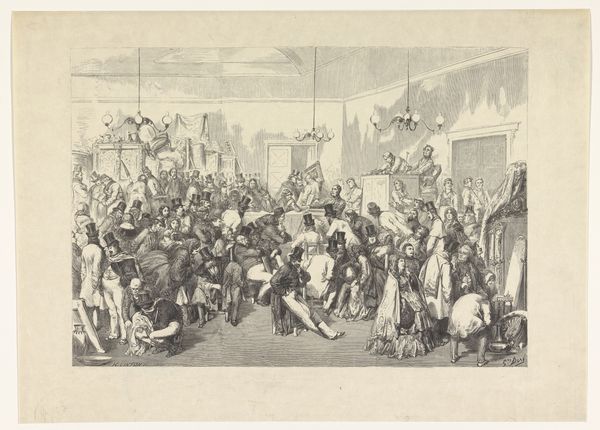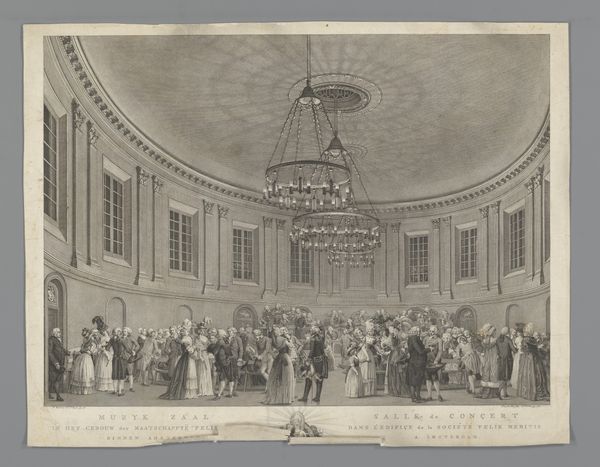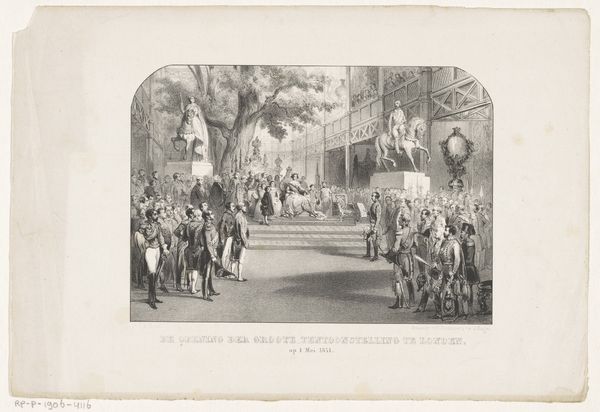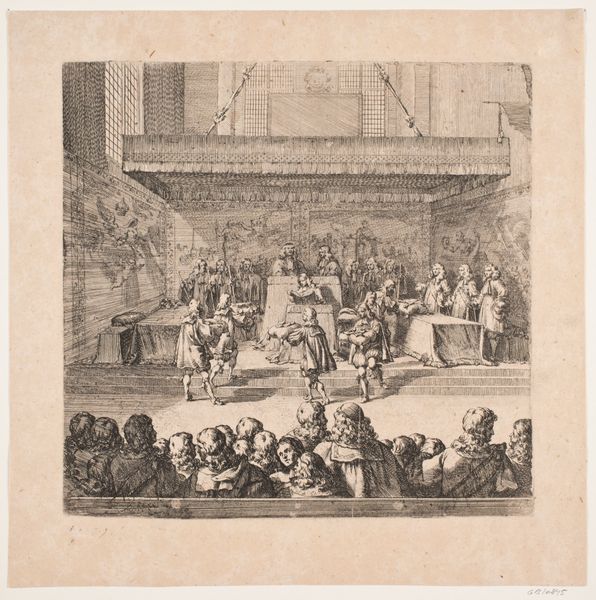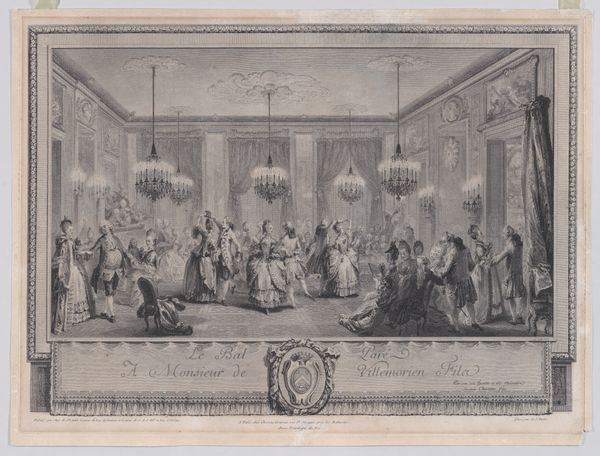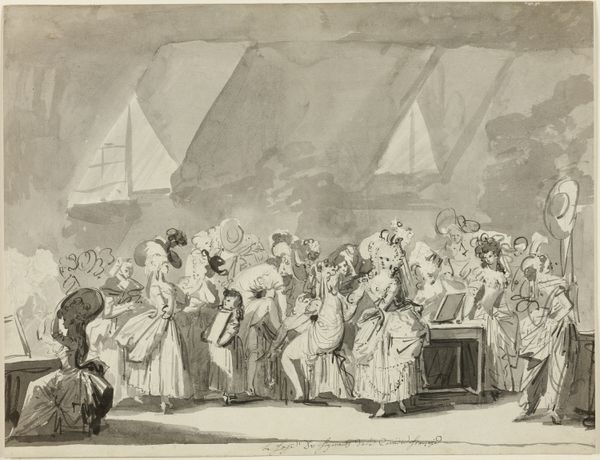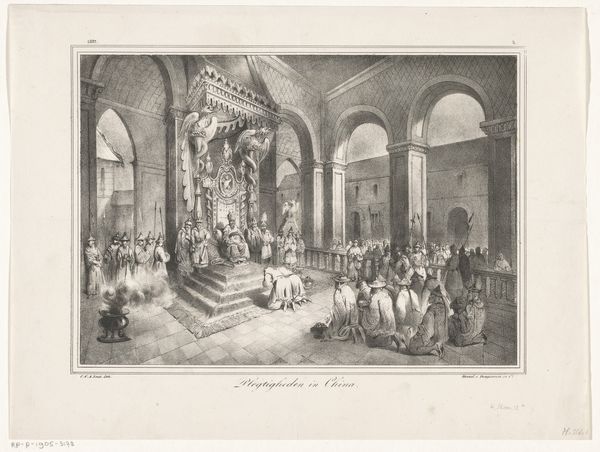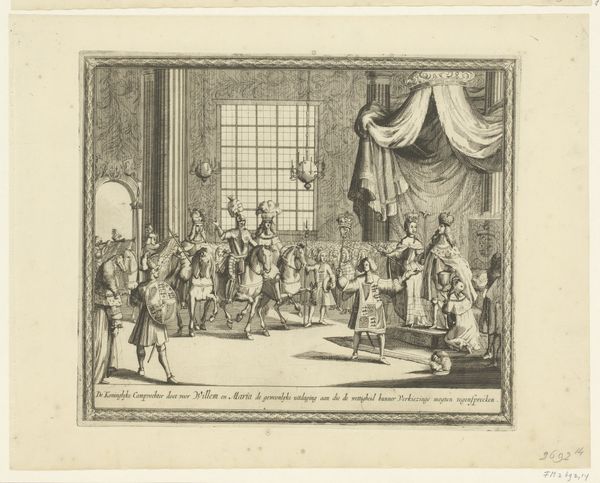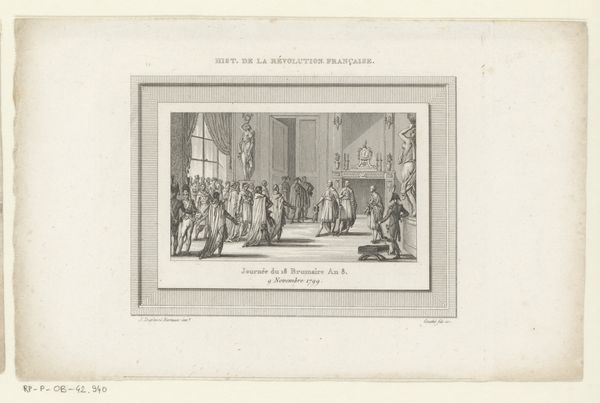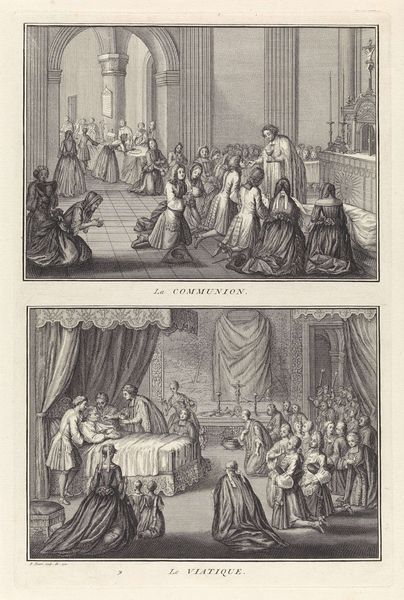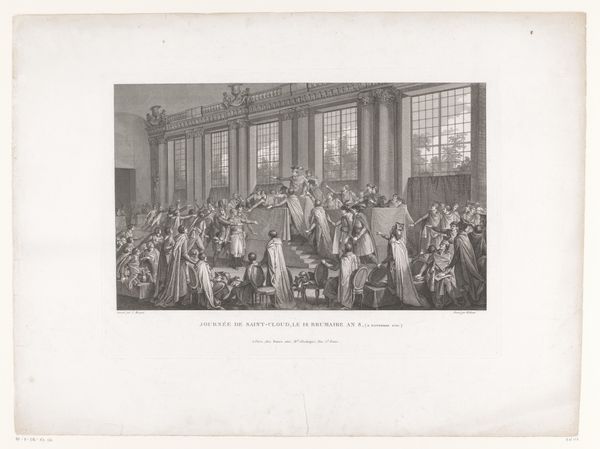
drawing, print, pen
#
drawing
#
comic strip sketch
#
mechanical pen drawing
# print
#
caricature
#
old engraving style
#
personal sketchbook
#
idea generation sketch
#
sketchwork
#
romanticism
#
pen-ink sketch
#
pen work
#
sketchbook drawing
#
pen
#
genre-painting
#
storyboard and sketchbook work
Dimensions: overall: 18.8 x 26.2 cm (7 3/8 x 10 5/16 in.)
Copyright: National Gallery of Art: CC0 1.0
Editor: So, this is Paul Gavarni’s “Mascarade,” a print from around 1831. It seems to depict a crowded theatre or performance. It looks like it's teeming with characters in elaborate costumes. What stands out to you about it? Curator: What I see is a pointed social commentary disguised as entertainment. Consider the context: 1830s France, still grappling with the aftermath of revolution and shifting class structures. These "mascarades," or masquerade balls, became spaces where social hierarchies were temporarily blurred, but never truly erased. Gavarni’s choice to render this scene through print – a readily accessible medium – suggests a desire to engage a broad audience. Editor: So, you're saying it's not just a snapshot of a fun night out? Curator: Exactly. Look closely. The figures in the foreground, the seemingly wealthy patrons, are caricatured, their expressions bordering on grotesque. In contrast, observe the performers – are they truly in control of the spectacle, or are they themselves objects of amusement? And who benefits most from this supposed freedom of disguise? Editor: It’s like he's questioning who is really wearing the mask. The audience or the performers? Curator: Precisely. Gavarni uses satire to expose the artificiality of social roles and the power dynamics at play. Are these masks liberating, or do they simply reinforce existing inequalities by creating a temporary illusion of change? What might a feminist reading reveal about the portrayal of women within this "mascarade"? Editor: Wow, I hadn't thought about it that way. I was focused on the costumes and the party atmosphere, but now I see so much more going on beneath the surface. Thanks! Curator: Art often acts as a mirror, reflecting society’s contradictions. Looking at pieces such as "Mascarade" helps us critically assess past social structures and question present power dynamics. There are several layers here which still relate to modern audiences.
Comments
No comments
Be the first to comment and join the conversation on the ultimate creative platform.


